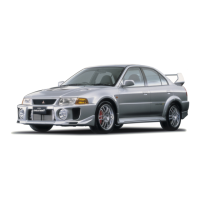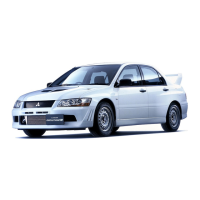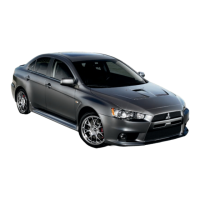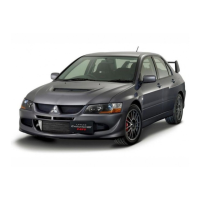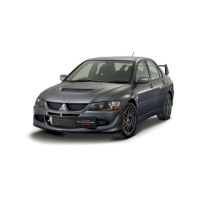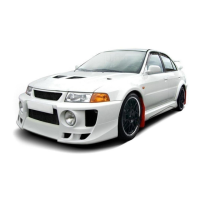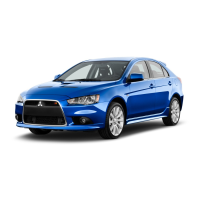5. Connect one end of one jumper cable to the
positive (+) terminal of the joint terminal
(B), and the other end to the positive (+) ter-
minal of the booster battery (C).
6. Connect
one end of the other jumper cable to
the negative (-) terminal of the booster bat-
tery, and the other end to the engine block of
the vehicle with the discharged battery.
WARNING
l
Be sure to observe the connecting se-
quence of → → → .
l
Make sure that the connection is made
to
the appointed position (shown in the il-
lustration). If the connection is made di-
rectly to the negative side of the battery,
the inflammable gasses generated from
the battery might catch fire and explode.
WARNING
l
When connecting the jumper cable, do
not connect the positive (+) cable to the
negative (-) terminal.
Otherwise sparks might cause explosion
of the battery.
CAUTION
l
Take
care not to get the jumper cable
caught in the cooling fan or other rotat-
ing part in the engine compartment.
l
Use the proper cables suitable for the bat-
tery size to prevent overheating of the ca-
bles.
l
Check the jumper cables for damage and
corrosion before use.
7. Start
the engine in the vehicle which has the
booster battery, let the engine idle a few mi-
nutes, then start the engine in the vehicle
with the discharged battery.
CAUTION
l
Keep
the engine of the vehicle giving assis-
tance running.
8. After
the engine is started, disconnect the ca-
bles in the reverse order and keep the engine
running for several minutes.
WARNING
l
Be sure to have a MITSUBISHI
MOTORS Authorized Service Point
charge the battery. Do not charge the bat-
tery yourself.
Flammable gases may leak from the bat-
tery and explode.
l
Electrolyte is corrosive diluted sulphuric
acid.
If electrolyte (battery acid) comes into con-
tact with your hands, eyes, clothes and
the painted surface of your vehicle, it
should be thoroughly flushed with water.
If electrolyte gets in your eyes, flush them
with water immediately and thoroughly,
and get prompt medical attention.
l
Never remove the battery label, upper cov-
er, exhaust tube or pipe. Flammable
gases may leak and explode.
CAUTION
l
This
vehicle is equipped with a special bat-
tery. Therefore, a battery may not be in-
stalled properly into the vehicle, even if it
is the same type. Be sure to have a
MITSUBISHI MOTORS Authorized
Service Point replace the battery.
l
Do not try to start your vehicle by push-
ing or towing.
Especially for Twin Clutch SST vehicles,
since their structure is different from ve-
hicles with a manual transmission, the en-
gine will not start using this method.
For emergencies
6-03
6

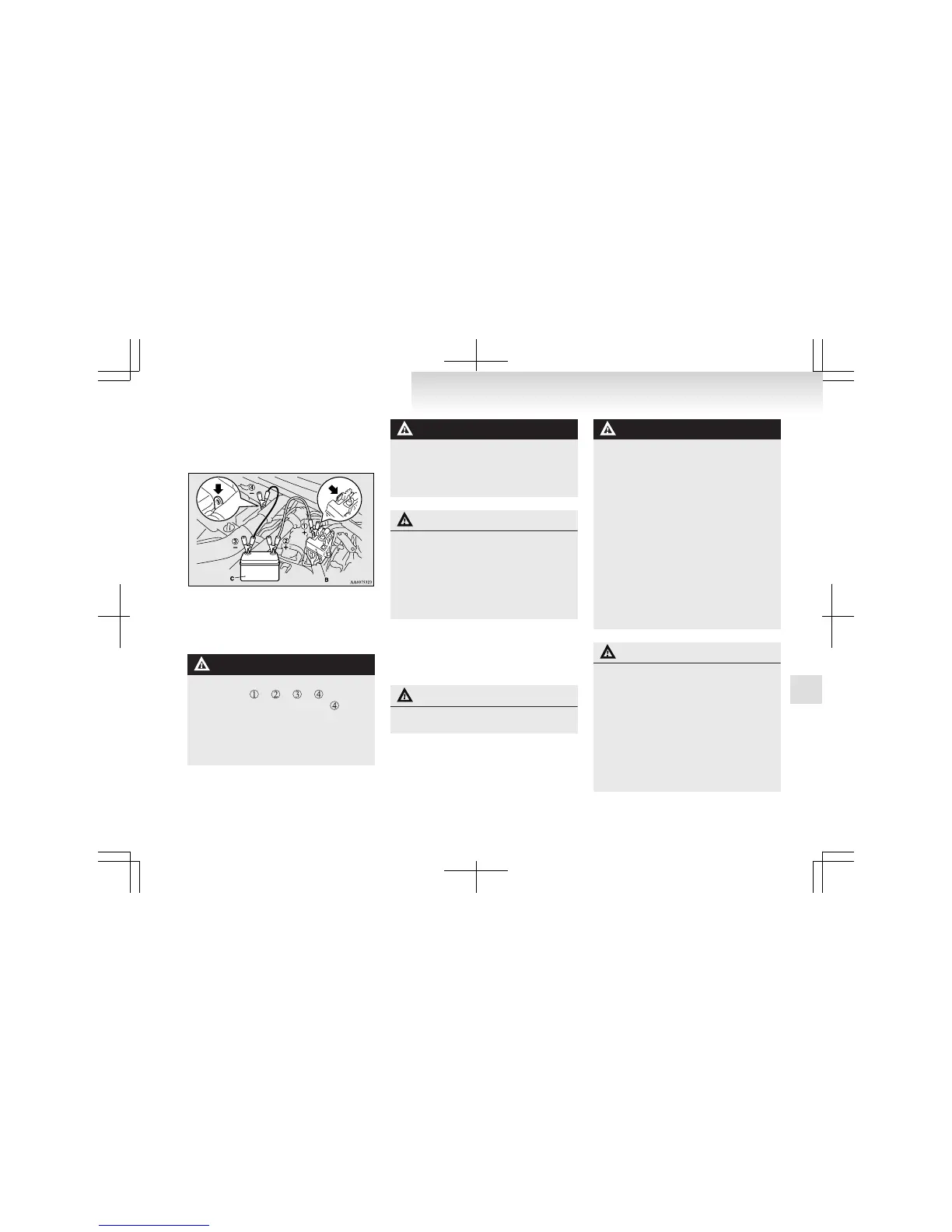